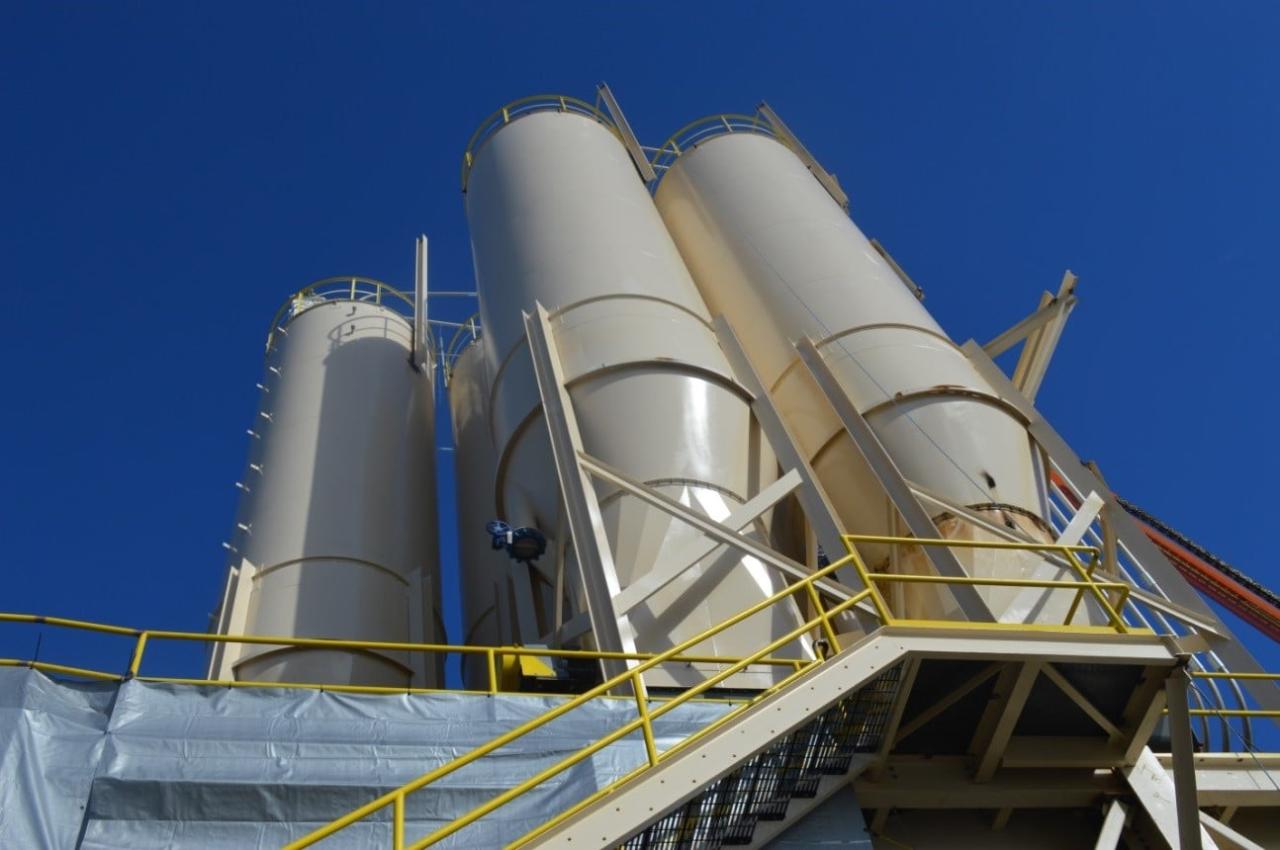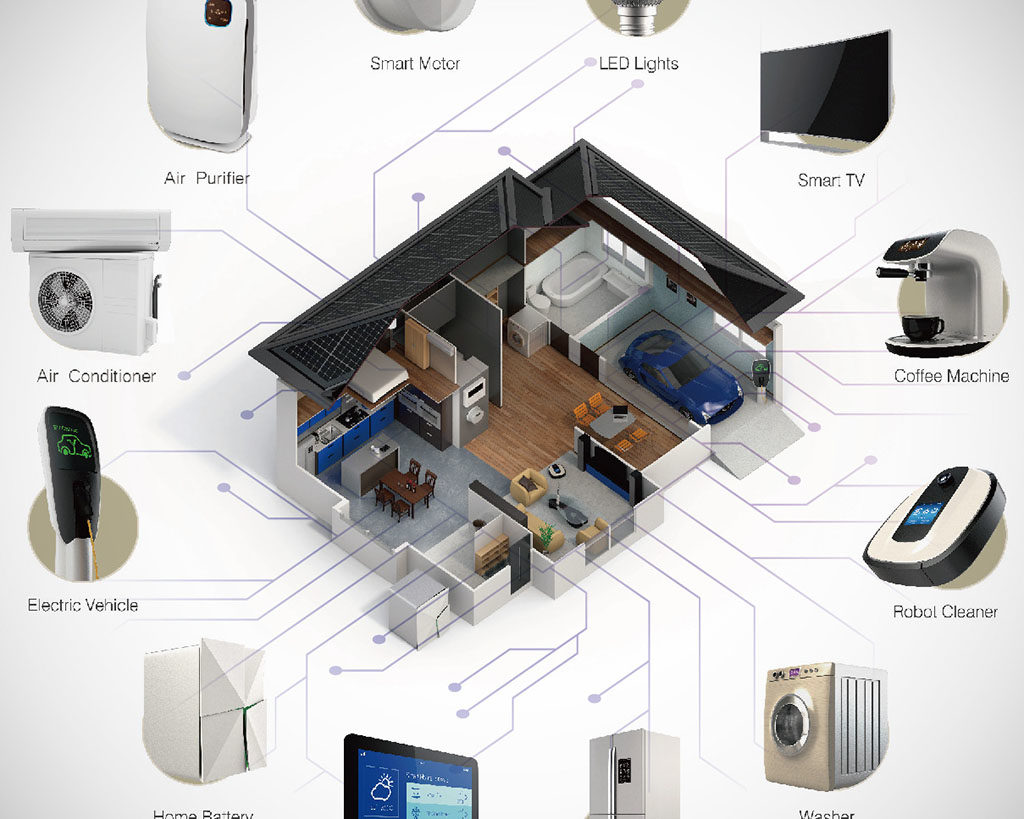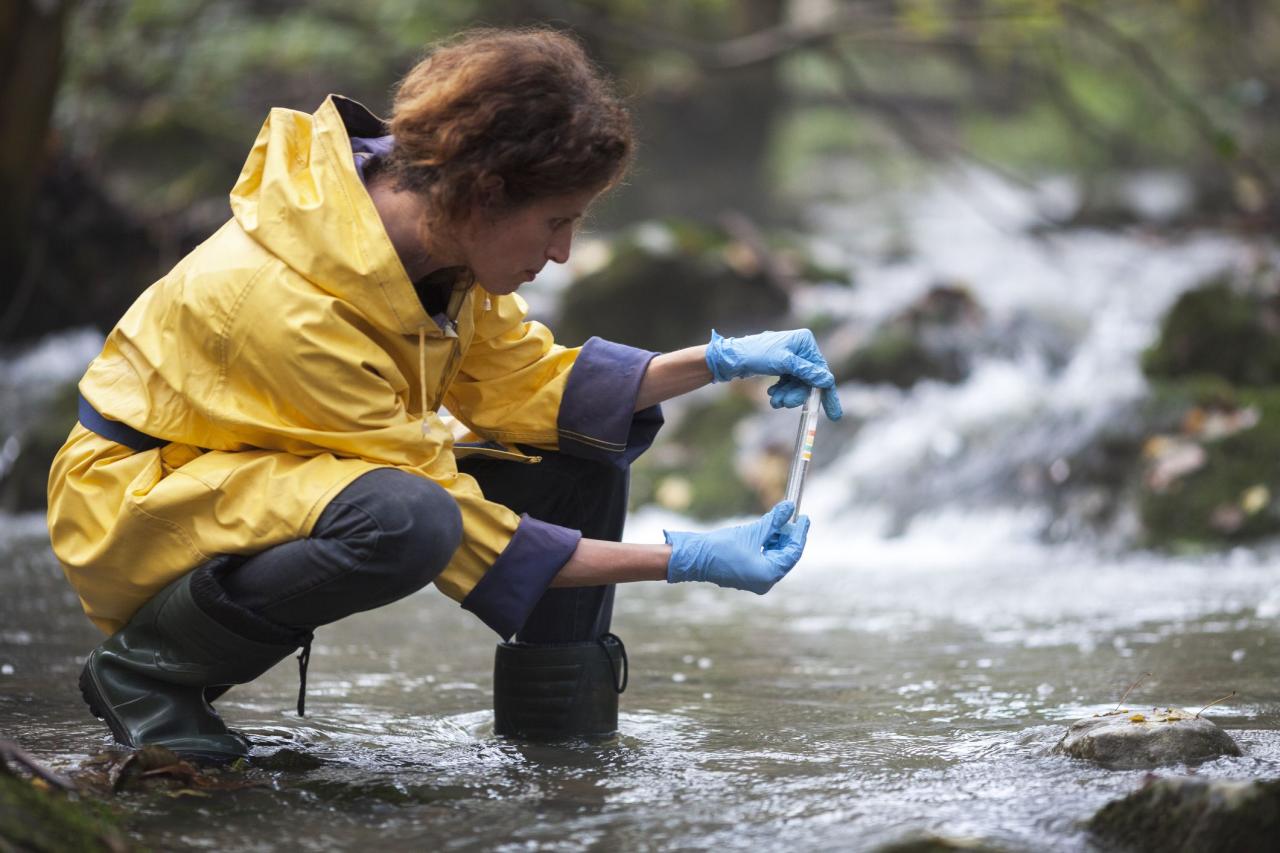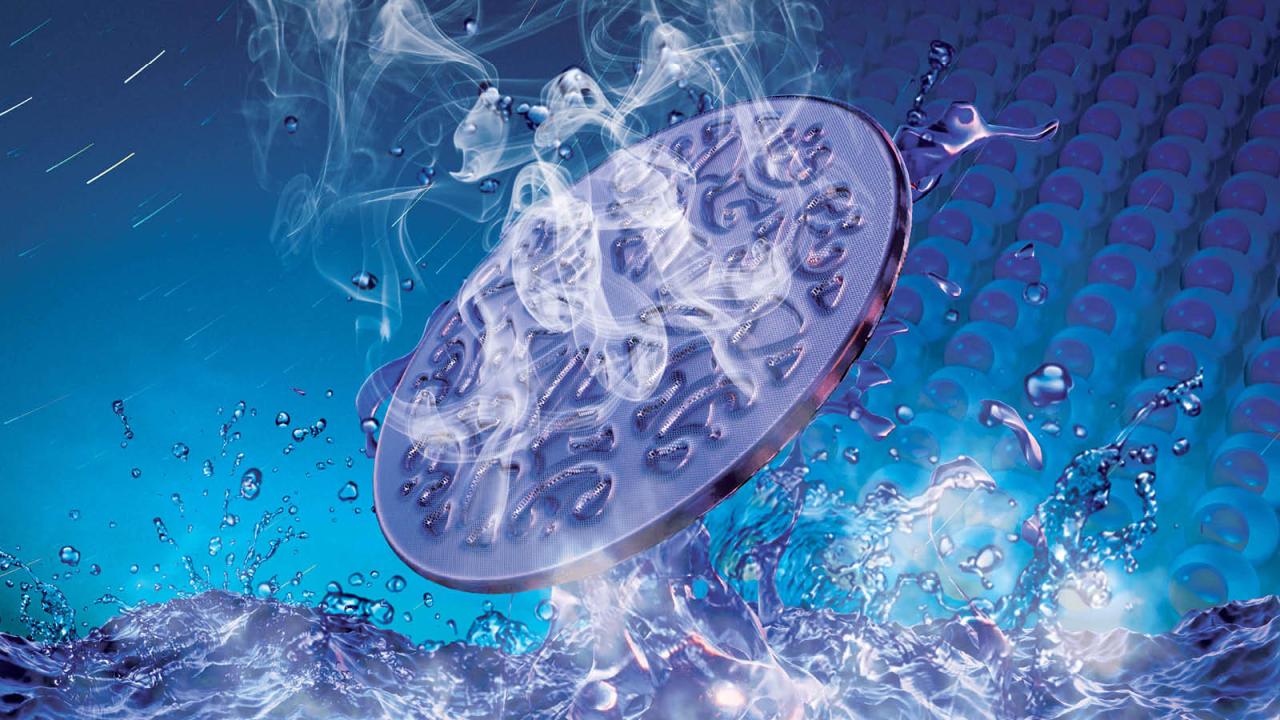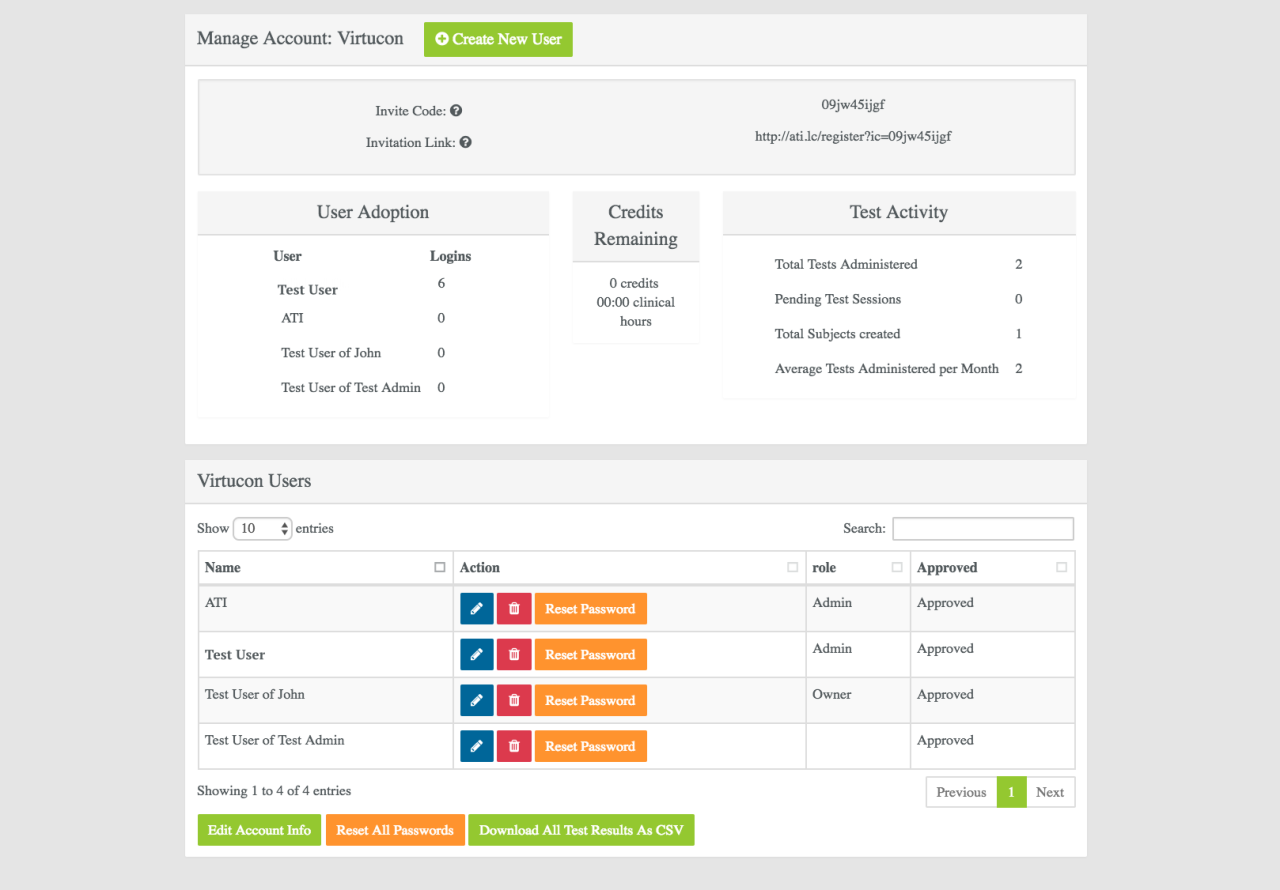Abatement Technologies: Protecting Our Environment
Abatement technologies are the unsung heroes of environmental protection, working behind the scenes to mitigate the harmful effects of pollution. These technologies are essential in tackling various environmental challenges, from […]
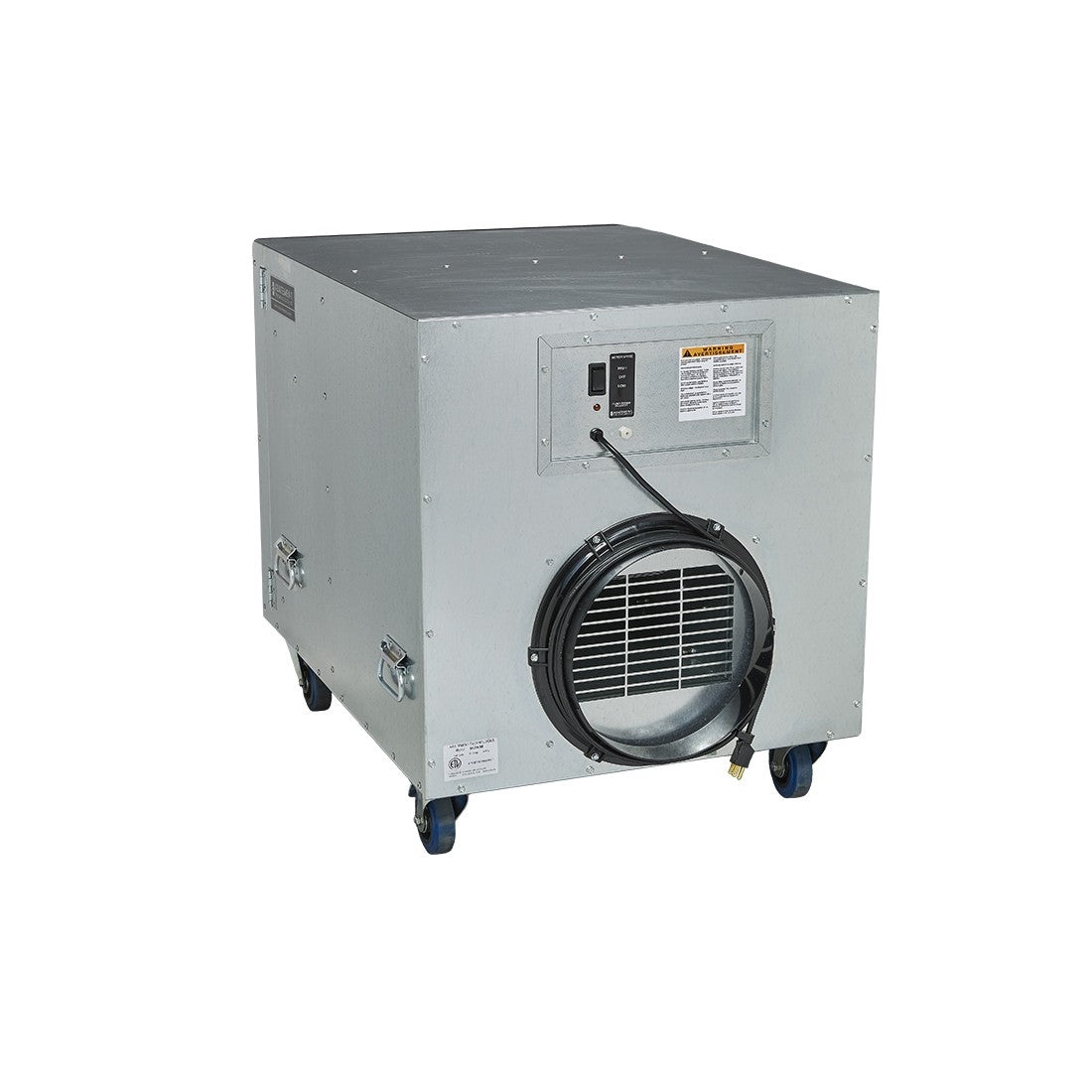
Abatement technologies are the unsung heroes of environmental protection, working behind the scenes to mitigate the harmful effects of pollution. These technologies are essential in tackling various environmental challenges, from cleaning up contaminated air and water to managing waste responsibly.
The development of abatement technologies has been driven by a growing awareness of the impact of human activities on the environment. As we strive for a sustainable future, these technologies play a crucial role in minimizing pollution and safeguarding our planet for generations to come.
Introduction to Abatement Technologies
Abatement technologies are a crucial component of environmental protection, playing a vital role in mitigating the harmful effects of pollution and promoting sustainable practices. These technologies are designed to reduce or eliminate pollutants from various sources, such as industrial processes, vehicles, and power plants. They work by capturing, transforming, or destroying pollutants before they are released into the environment.
The development of abatement technologies has been driven by the growing awareness of environmental issues and the need to minimize their impact on human health and ecosystems.
Historical Development of Abatement Technologies
The history of abatement technologies is closely intertwined with the evolution of industrialization and the increasing awareness of environmental pollution. Early attempts at pollution control focused on simple methods like settling ponds and chimneys to disperse pollutants. However, as industrial processes became more complex and the scale of pollution increased, more sophisticated technologies were developed.
- Early 20th Century: The first significant advancements in abatement technologies emerged in the early 20th century with the development of technologies like electrostatic precipitators and scrubbers for removing particulate matter and sulfur dioxide from industrial emissions. These technologies were primarily driven by concerns about air pollution and its impact on public health.
- Mid-20th Century: The mid-20th century witnessed further advancements in abatement technologies, particularly in response to the growing awareness of the environmental impacts of industrial activities. This period saw the development of technologies like catalytic converters for reducing vehicle emissions and advanced wastewater treatment processes.
- Late 20th Century and Beyond: The late 20th century and beyond have seen a surge in the development of more sophisticated and environmentally friendly abatement technologies. This includes technologies like carbon capture and storage, bioremediation, and advanced oxidation processes. These technologies are designed to address a wider range of pollutants and to achieve higher levels of pollution reduction.
Key Drivers for the Adoption of Abatement Technologies
The adoption of abatement technologies is driven by a combination of factors, including:
- Environmental Regulations: Stringent environmental regulations and policies have played a significant role in driving the adoption of abatement technologies. Governments worldwide have implemented regulations to limit emissions and promote cleaner production practices, forcing industries to invest in pollution control technologies.
- Economic Incentives: Economic incentives, such as tax breaks, subsidies, and carbon trading schemes, have also encouraged the adoption of abatement technologies. These incentives can help offset the initial investment costs and make it more financially attractive for companies to adopt cleaner technologies.
- Public Pressure: Growing public awareness of environmental issues and the health risks associated with pollution has put pressure on companies to adopt cleaner technologies. Consumers are increasingly demanding environmentally responsible products and services, creating a market for companies that prioritize sustainability.
- Technological Advancements: Advancements in technology have led to the development of more efficient and cost-effective abatement technologies. These advancements have made it easier and more affordable for companies to adopt cleaner technologies, even without regulatory pressure or economic incentives.
Types of Abatement Technologies
Abatement technologies are essential tools for mitigating environmental pollution and promoting sustainable practices. They aim to reduce or eliminate pollutants at their source or during various stages of a process. Abatement technologies are classified based on their application areas, which include air pollution, water pollution, and waste management. Each category encompasses a wide range of technologies, each with its unique advantages and disadvantages.
Air Pollution Abatement Technologies
Air pollution abatement technologies are designed to control emissions from various sources, such as industrial facilities, power plants, and vehicles. These technologies focus on removing or reducing pollutants from the air, ensuring cleaner air quality.
- Electrostatic Precipitators (ESPs): ESPs are widely used for removing particulate matter from flue gases. They operate by charging particles electrically and then collecting them on charged plates. ESPs are highly efficient in removing large particles but may be less effective for smaller particles.
- Fabric Filters (Bag Houses): Fabric filters use porous fabric bags to capture particulate matter from flue gases. They are effective in removing fine particles and are often used in industries with high dust loads. However, they require regular maintenance and can be prone to clogging.
- Scrubbers: Scrubbers use liquid solutions to remove pollutants from flue gases. They are effective in removing sulfur dioxide (SO2), nitrogen oxides (NOx), and other gases. Different types of scrubbers exist, such as wet scrubbers, dry scrubbers, and semi-dry scrubbers, each with its own operating principles and efficiency.
- Catalytic Converters: Catalytic converters are essential components in vehicle exhaust systems. They utilize catalysts to convert harmful pollutants like carbon monoxide (CO), hydrocarbons (HC), and NOx into less harmful substances, such as carbon dioxide (CO2), water (H2O), and nitrogen (N2).
Water Pollution Abatement Technologies
Water pollution abatement technologies focus on reducing or eliminating pollutants from wastewater and other water sources. These technologies aim to improve water quality and ensure its safe use for various purposes.
- Wastewater Treatment Plants: Wastewater treatment plants employ a series of processes to remove pollutants from wastewater. These processes include physical, chemical, and biological treatments, aiming to produce clean water that can be discharged safely or reused.
- Activated Carbon Adsorption: Activated carbon adsorption utilizes highly porous carbon materials to remove contaminants from water. The large surface area of activated carbon allows for the adsorption of various pollutants, including organic compounds, heavy metals, and pesticides.
- Reverse Osmosis (RO): RO is a membrane-based technology that uses pressure to separate water molecules from dissolved salts and other contaminants. It is highly effective in removing a wide range of pollutants and is widely used in desalination and water purification.
- Ultraviolet (UV) Disinfection: UV disinfection uses ultraviolet light to kill harmful microorganisms in water. UV light damages the DNA of microorganisms, rendering them inactive. This technology is widely used in water treatment plants and for drinking water disinfection.
Waste Management Abatement Technologies
Waste management abatement technologies focus on reducing the environmental impact of waste by promoting waste reduction, reuse, and recycling. These technologies aim to minimize landfill disposal and promote sustainable waste management practices.
- Waste Reduction: Waste reduction focuses on minimizing the amount of waste generated in the first place. This can be achieved through various strategies, such as product design for durability and reusability, and promoting consumer awareness about waste reduction practices.
- Waste Recycling: Waste recycling involves processing used materials to recover valuable resources. Recycling processes vary depending on the material type, but they generally involve separating, cleaning, and reprocessing materials for reuse.
- Waste Composting: Composting is a biological process that decomposes organic waste materials, such as food scraps and yard waste, into a nutrient-rich soil amendment. Composting reduces the volume of waste going to landfills and provides a valuable soil fertilizer.
- Waste Incineration: Waste incineration involves burning waste at high temperatures to reduce its volume and generate energy. However, incineration can release air pollutants, and its environmental impact is subject to debate.
Working Principles of Abatement Technologies
Abatement technologies are engineered systems designed to reduce or eliminate pollutants from various sources. These technologies employ a range of physical, chemical, and biological processes to remove or transform pollutants into less harmful forms. This section will delve into the fundamental principles behind the operation of these technologies, outlining the processes involved in pollutant removal.
Physical Abatement Technologies
Physical abatement technologies rely on physical processes to separate pollutants from the emission stream. These processes include:
- Filtration: Filtration involves passing the emission stream through a filter medium that traps the pollutants. The filter medium can be made of various materials, such as fabric, paper, or activated carbon, depending on the size and type of pollutants to be removed. For example, a bag filter is commonly used in industrial settings to capture particulate matter from flue gases.
- Cyclones: Cyclones utilize centrifugal force to separate pollutants from the emission stream. The emission stream is introduced tangentially into a cylindrical chamber, causing the heavier particles to be thrown outwards and collected at the bottom. This technology is widely used in coal-fired power plants to remove fly ash from flue gases.
- Electrostatic Precipitators (ESPs): ESPs use an electric field to remove particulate matter from the emission stream. The pollutants are charged as they pass through an electric field and then collected on electrodes with the opposite charge. This technology is commonly used in power plants and industrial processes to remove fine particulate matter.
- Gravity Settling: Gravity settling is a simple process that relies on the difference in density between pollutants and the surrounding air or water. The pollutants settle out of the emission stream due to gravity, allowing them to be collected at the bottom. This technology is often used for removing large particles from wastewater or industrial discharges.
Chemical Abatement Technologies
Chemical abatement technologies utilize chemical reactions to remove or transform pollutants. These technologies include:
- Scrubbing: Scrubbing involves contacting the emission stream with a liquid absorbent, which reacts with or dissolves the pollutants. The liquid absorbent can be water, an alkaline solution, or a chemical reagent depending on the specific pollutants to be removed. For example, wet scrubbers are commonly used in power plants to remove sulfur dioxide (SO2) from flue gases. The SO2 reacts with the alkaline solution in the scrubber, forming sulfites or sulfates, which are then removed from the system.
- Oxidation: Oxidation involves reacting the pollutants with an oxidizing agent, such as oxygen or ozone, to convert them into less harmful forms. This process is often used to remove volatile organic compounds (VOCs) from industrial emissions. For example, catalytic oxidation can be used to convert VOCs into carbon dioxide (CO2) and water (H2O).
- Absorption: Absorption involves using a solid or liquid absorbent to trap the pollutants. The absorbent material can be activated carbon, zeolites, or other materials that have a high surface area and affinity for the pollutants. This technology is commonly used to remove pollutants from air or water streams.
- Adsorption: Adsorption is a process where pollutants are adsorbed onto the surface of a solid material. This process is often used to remove specific pollutants from air or water streams. For example, activated carbon is commonly used to adsorb VOCs and other pollutants from industrial emissions.
Biological Abatement Technologies
Biological abatement technologies utilize living organisms to remove or transform pollutants. These technologies include:
- Biofiltration: Biofiltration involves using a bed of microorganisms to remove pollutants from the emission stream. The microorganisms metabolize the pollutants, converting them into less harmful forms. This technology is commonly used to remove VOCs, odors, and other pollutants from industrial emissions.
- Bioaugmentation: Bioaugmentation involves adding specific microorganisms to the emission stream to enhance the breakdown of pollutants. This technology is often used to treat contaminated soil or water. For example, bioaugmentation can be used to remove oil spills or other organic contaminants from the environment.
- Bioscrubbing: Bioscrubbing combines the principles of scrubbing and biofiltration. The emission stream is first contacted with a liquid absorbent, which removes the pollutants. The liquid absorbent is then passed through a biofilter, where microorganisms break down the pollutants. This technology is commonly used to remove VOCs and other pollutants from industrial emissions.
Applications of Abatement Technologies

Abatement technologies are employed across various industries to mitigate the release of harmful pollutants into the environment. Their application is crucial for achieving environmental sustainability and complying with regulatory standards.
Power Generation
The power generation industry is a major contributor to air pollution, primarily due to the combustion of fossil fuels. Abatement technologies play a vital role in reducing emissions from power plants, ensuring cleaner energy production.
Flue Gas Desulfurization
Flue gas desulfurization (FGD) systems are widely used to remove sulfur dioxide (SO2) from the flue gas of coal-fired power plants. These systems typically use a wet scrubbing process, where flue gas is contacted with an alkaline slurry, such as limestone or lime, to absorb SO2 and form a gypsum byproduct.
Selective Catalytic Reduction
Selective catalytic reduction (SCR) is a technology used to reduce nitrogen oxides (NOx) emissions from power plants. In SCR systems, ammonia is injected into the flue gas stream, where it reacts with NOx in the presence of a catalyst, converting NOx to nitrogen and water.
Case Study: The Tennessee Valley Authority (TVA)
The TVA, a major power generation company in the United States, has successfully implemented FGD and SCR technologies at several of its coal-fired power plants. These installations have significantly reduced SO2 and NOx emissions, contributing to improved air quality in the region.
Manufacturing
The manufacturing industry encompasses a wide range of processes that can generate various pollutants, including volatile organic compounds (VOCs), particulate matter (PM), and heavy metals. Abatement technologies are essential for controlling emissions from manufacturing facilities and protecting worker and community health.
Activated Carbon Adsorption
Activated carbon adsorption is a widely used technique for removing VOCs from industrial emissions. Activated carbon is a porous material with a high surface area that effectively adsorbs VOCs, preventing their release into the atmosphere.
Electrostatic Precipitators
Electrostatic precipitators (ESPs) are effective for removing PM from industrial emissions. ESPs use an electric field to charge particles in the flue gas, causing them to adhere to collection plates, where they are removed from the gas stream.
Case Study: The Dow Chemical Company
Dow Chemical has implemented a variety of abatement technologies at its manufacturing facilities, including activated carbon adsorption and ESPs. These technologies have significantly reduced emissions of VOCs and PM, contributing to improved air quality in the surrounding communities.
Transportation
The transportation sector is a major source of air pollution, primarily due to the combustion of fossil fuels in vehicles. Abatement technologies are crucial for reducing emissions from vehicles and improving air quality in urban areas.
Catalytic Converters
Catalytic converters are a key technology for reducing emissions from gasoline-powered vehicles. They contain a catalytic material that promotes chemical reactions that convert harmful pollutants, such as NOx, carbon monoxide (CO), and hydrocarbons, into less harmful substances.
Diesel Particulate Filters
Diesel particulate filters (DPFs) are used to remove soot and other particulate matter from diesel engine exhaust. DPFs work by trapping particles in a filter material, where they are then oxidized and released as less harmful gases.
Case Study: The London Congestion Charge
London implemented a congestion charge in 2003, which levied a fee on vehicles entering the city center. This policy has contributed to a significant reduction in traffic congestion and air pollution, demonstrating the effectiveness of policy measures combined with abatement technologies in reducing emissions from the transportation sector.
Economic and Environmental Considerations
The effectiveness of abatement technologies is not only measured by their technical performance but also by their economic and environmental implications. Cost-effectiveness, environmental impact, and regulatory frameworks play crucial roles in determining the feasibility and adoption of these technologies.
Cost-Effectiveness of Abatement Technologies
The cost-effectiveness of abatement technologies is a key factor in their implementation. It is essential to consider the initial investment costs, operational expenses, and potential benefits in terms of reduced pollution and improved environmental outcomes.
- Initial Investment Costs: The initial investment costs of abatement technologies can vary significantly depending on the type of technology, scale of operation, and specific application. Some technologies, such as scrubbers for flue gas desulfurization, can involve substantial capital expenditures. Others, like catalytic converters for vehicle emissions, may have lower initial costs.
- Operational Expenses: Operational expenses include maintenance, energy consumption, and consumables. These costs can vary depending on the technology’s complexity and operating conditions. For example, technologies that require regular maintenance or consume significant amounts of energy will have higher operational costs.
- Benefits and Cost-Benefit Analysis: The benefits of abatement technologies include reduced pollution, improved public health, and compliance with environmental regulations. Cost-benefit analysis is a crucial tool for evaluating the economic viability of these technologies. It involves quantifying the costs and benefits over the technology’s lifetime and comparing them to determine its net value.
Environmental Impact of Abatement Technologies
While abatement technologies aim to reduce pollution, it is important to consider their potential environmental impacts, including secondary pollution and resource consumption.
- Secondary Pollution: Some abatement technologies can generate secondary pollutants, which may be less harmful than the primary pollutants they target but still pose environmental risks. For example, certain air pollution control technologies may produce particulate matter or volatile organic compounds as byproducts.
- Resource Consumption: Abatement technologies require resources for their production, operation, and disposal. These resources can include energy, water, and materials. It is essential to consider the environmental impacts associated with the extraction, processing, and disposal of these resources.
- Life Cycle Assessment: Life cycle assessment (LCA) is a comprehensive methodology for evaluating the environmental impacts of products and processes throughout their entire life cycle. It helps to identify potential environmental burdens associated with abatement technologies, from raw material extraction to end-of-life disposal.
Regulatory Frameworks and Policies
Government regulations and policies play a significant role in promoting the adoption of abatement technologies. These frameworks often set standards for pollution levels, incentivize the use of specific technologies, and enforce compliance.
- Emission Standards: Regulatory bodies set emission standards for various pollutants, such as sulfur dioxide, nitrogen oxides, and particulate matter. These standards establish maximum allowable emissions levels for different industries and sources.
- Incentives and Subsidies: Governments may provide incentives and subsidies to encourage the adoption of abatement technologies. These incentives can include tax credits, grants, and loan programs.
- Compliance Monitoring and Enforcement: Regulatory agencies monitor compliance with emission standards and enforce penalties for violations. These measures ensure that industries and facilities are implementing effective abatement technologies to reduce pollution.
Summary: Abatement Technologies
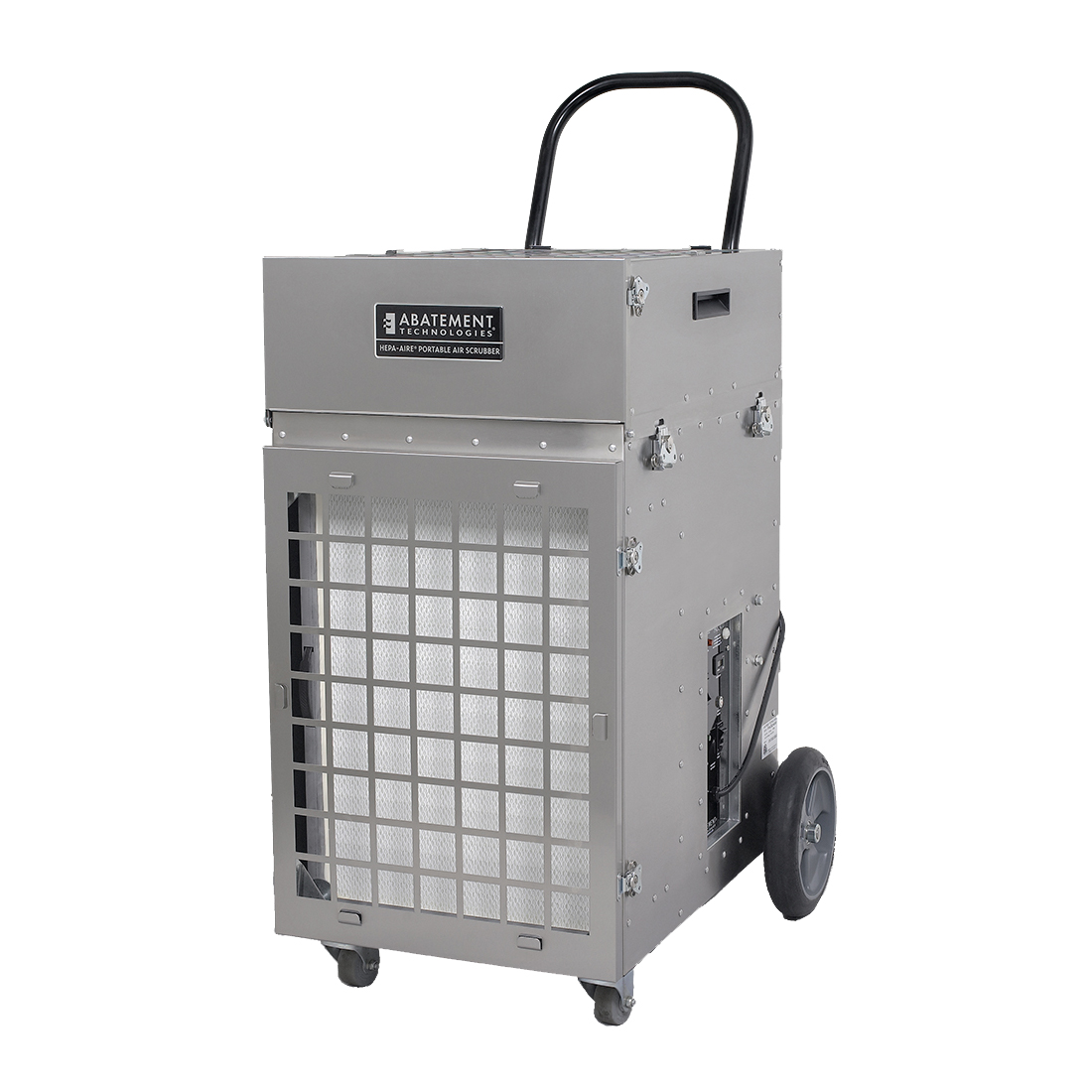
Abatement technologies offer a compelling solution to the pressing environmental challenges we face. By understanding their principles, applications, and emerging trends, we can effectively reduce pollution and create a healthier, more sustainable world. As we continue to innovate and refine these technologies, we move closer to a future where environmental protection is seamlessly integrated into our daily lives.
Abatement technologies play a crucial role in reducing environmental pollution. One example is the use of gas chromatography systems, such as the Agilent Technologies 6890N , to analyze and monitor emissions from industrial processes. This information can then be used to optimize abatement strategies and minimize environmental impact.
